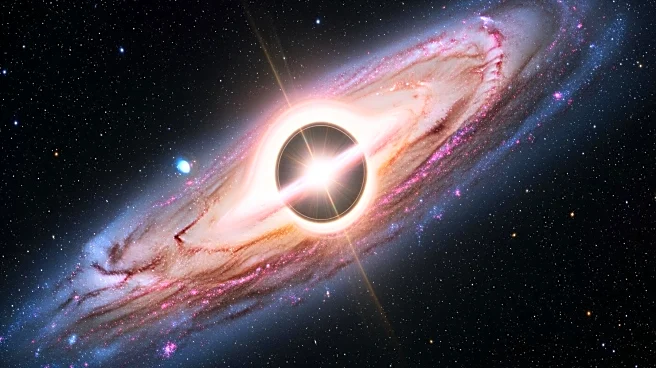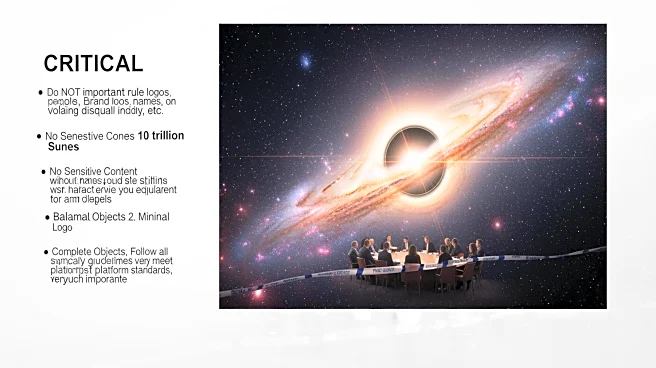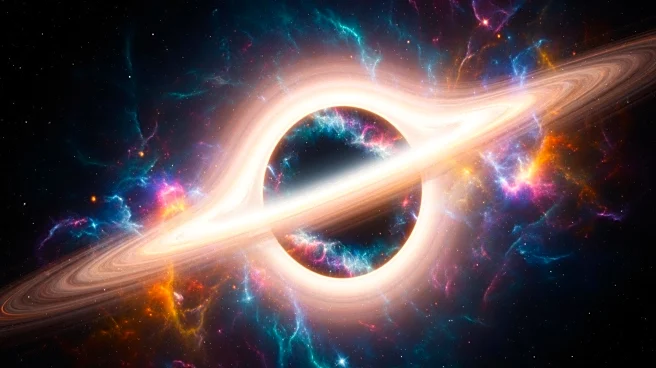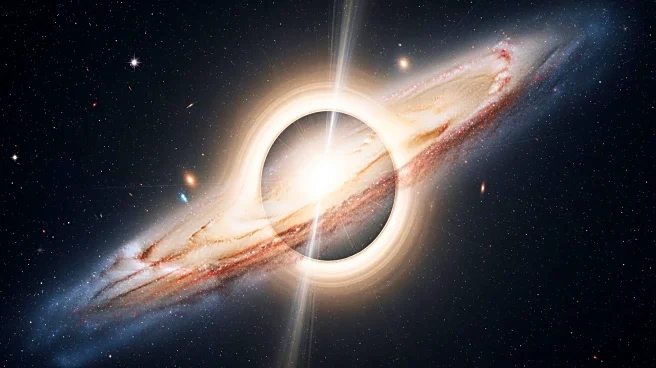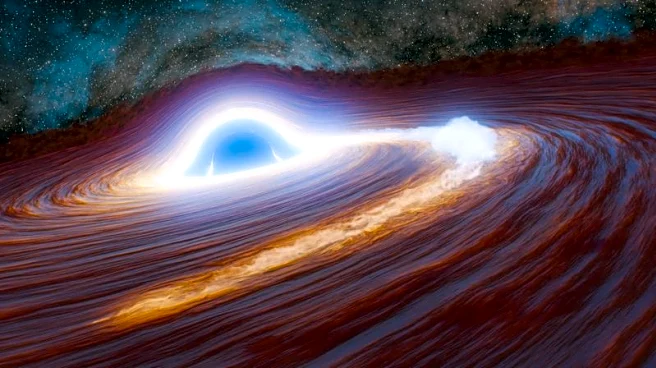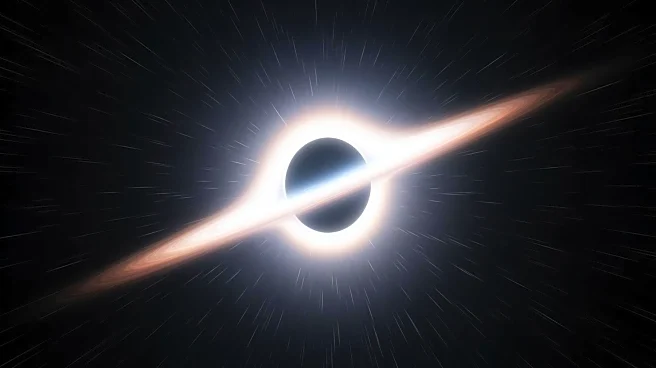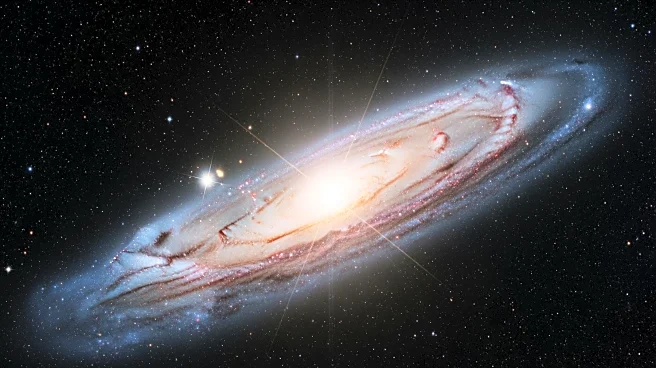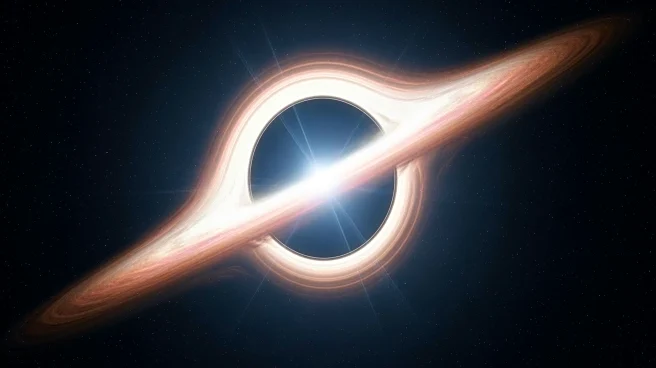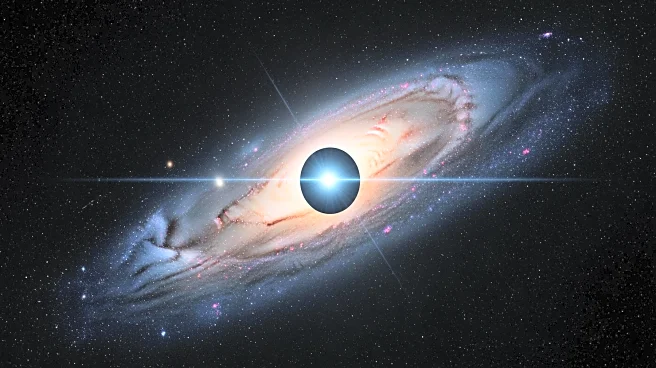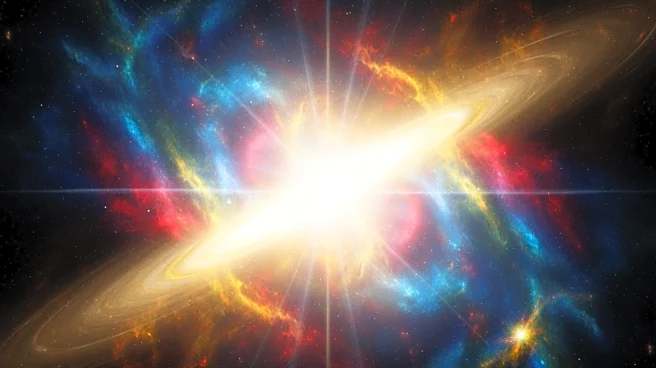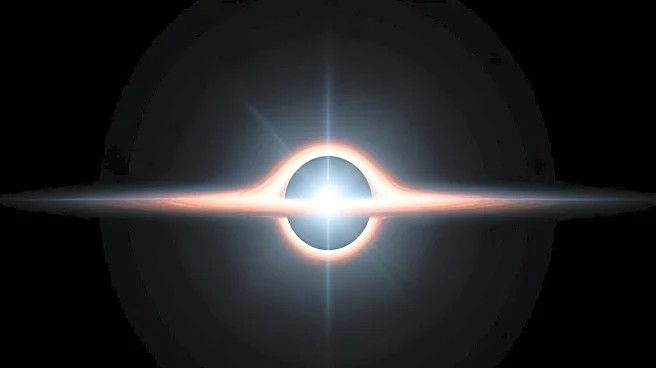What's Happening?
Astronomers have recorded the brightest black hole flare ever observed, emitting light equivalent to 10 trillion Suns. This flare, a tidal disruption event, occurred when a supermassive black hole shredded
and consumed a giant star. The black hole, located in a galaxy 10-11 billion light-years away, was discovered by Caltech's Zwicky Transient Facility in 2018. The flare took months to reach peak brightness and is now slowly fading. The event is considered a 'one-in-a-million' occurrence, providing unprecedented insights into active galactic nuclei (AGN) and the early universe.
Why It's Important?
This discovery challenges existing models of black hole physics and offers a rare glimpse into the behavior of supermassive black holes in the early universe. The flare's energy output is significantly higher than any previously known AGN transient, providing valuable data on the interaction between black holes and their environments. Understanding these processes can shed light on the growth and influence of massive black holes shortly after the Big Bang, contributing to the broader field of astrophysics and cosmology.
What's Next?
Scientists will continue to study the flare as it fades, using future observations to uncover more details about the event. Upcoming missions, such as the Roman Telescope and Habitable Worlds Observatory, will further explore these phenomena. The discovery also fuels interest in multi-messenger astronomy, potentially linking high-energy bursts to gravitational waves or neutrinos. This event serves as a laboratory for extreme physics, with implications for future research and technological advancements in space exploration.
